10 BEST DSLR CAMERAS REVIEWS FOR PRO-LEVEL PHOTOGRAPHY 2023
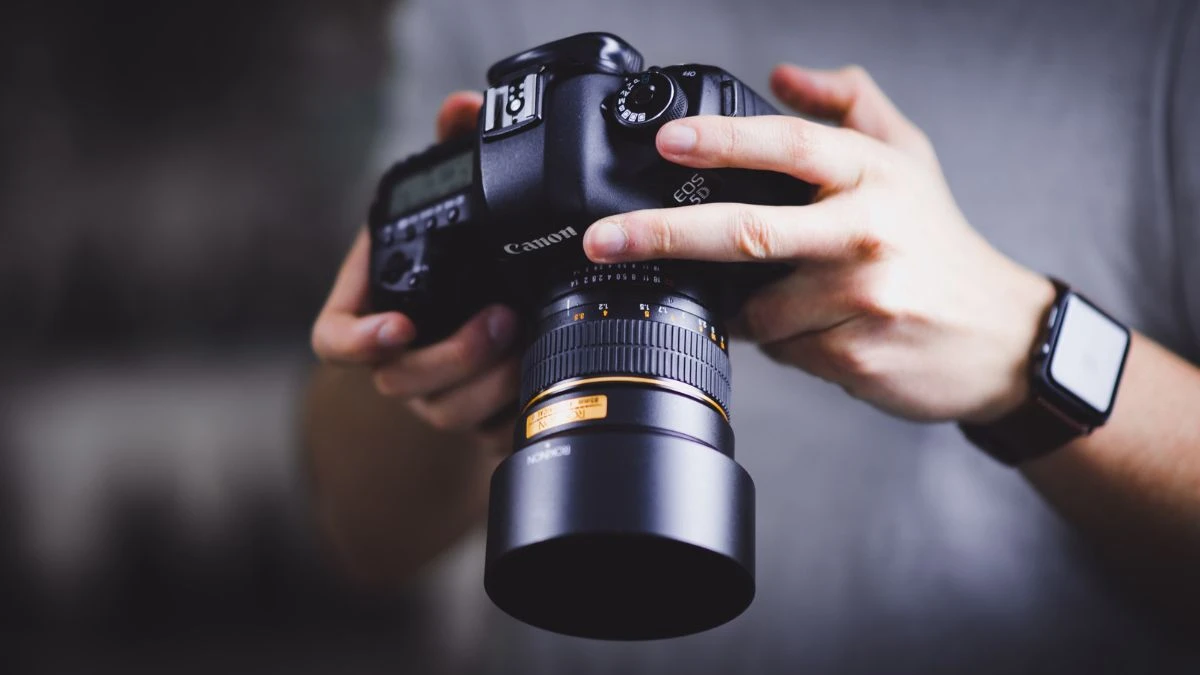
Every moment is precious and should be captured to reminisce over in the future. And besides, who doesn’t like a perfect picture? Getting a flawless picture can boost one’s confidence and self-esteem. It’s true that a smile can make a picture-perfect. But, to capture the essence of it, we need the best equipment. We have the Best DSLR cameras which offers that advantage.
DSLR camera or Digital Single-Lens Reflex camera has a reflex design mechanism that separates it from other digital cameras. And that makes it the best equipment for capturing and creating long-lasting, high-definition, high-resolution images and videos.
These multi-purpose cameras are never out of trend or out of stock and so they are still the first choice of many professionals and amateur photographers as well.
Types of DSLRs
There are two types of DSLRs:
The main distinguishing point of these two types is the size of the image sensor, which affects the settings of the camera you use.
10 Best DSLR Cameras (Full Frame & Crop Sensor)
Buy NowCANON EOS Rebel T7
Best for: home photographers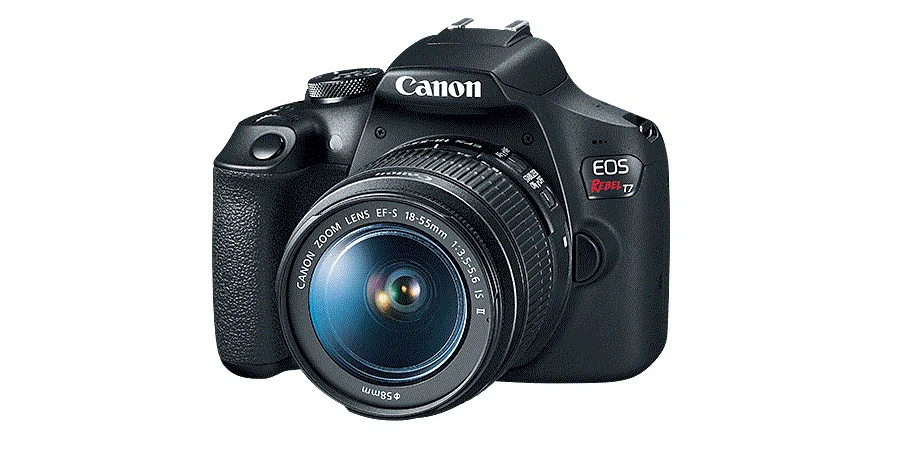
Image Credits: Canon
The best camera for capturing everyday moments.
Specifications
| Sensor | APS-C CMOS |
| Burst speed | 3 fps |
| Image processor | DIGIC 4+ |
| ISO settings | Auto, 100 – 6400 |
| Colour filter system | RGB primary colours |
| Type of viewfinder | Fixed pentamirror |
| Magnification of viewfinder | Approx. 0.8x |
| Video file format | MPEG4 AVC/H.264, Linear PCM audio |
| Memory type | SD, SDHC, SDXC card |
| Operating temperature | 32-104℉ |
| Working humidity | 85% or less |
| Connectivity | WiFi, NFC, USB |
| Price | $599 |
Canon T7 is by far the world’s most popular DSLR because of its affordability and design. Beginner photographers usually crown this to the list of best DSLR Cameras. And also, it is suitable for capturing little moments of everyday life. It can be carried on a solo trip or a family vacation or capture the precious moments of a family event.
Moreover, Canon T7 is the best for photographs with an easy-to-navigate menu. It comes equipped with a large 24.1 Megapixel Sensor that allows incredible shots. The camera is designed immaculately with an easy grip and perfect durability. It captures pictures in a warm hue with heavy saturation on blue and red colors. As a result, it offers great contrast images. Autofocus in photo mode is fast and reliable.
Furthermore, built-in Wi-Fi with NFC lets you pair the DSLR with your smartphone or tablet for wirelessly sharing photos and videos for instant online posting. And finally, it includes a large LCD screen, full HD video recording, and an on-board feature guide that lets you snap beautiful pictures.
Pros & Cons
| Pros | Cons |
| Simple and easy menu | No slow motion in video mode |
| Affordable | Poor stabilization |
| Ergonomic design | |
| Great contrast images | |
| Wireless connectivity |
NIKON D3500
Buy Now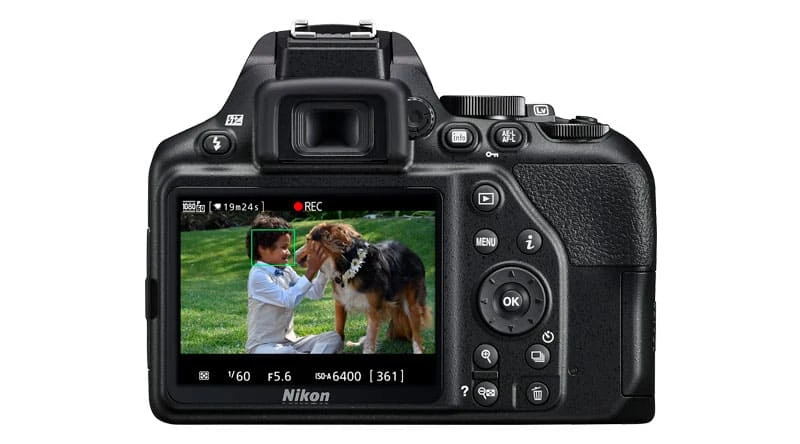
Image Credits: Nikon
The best friend of a student photographer.
Specifications
| Sensor | CMOS |
| Burst speed | 5 fps |
| Image processor | EXPEED 4 |
| ISO settings | 100 – 25,600 |
| Colour filter system | RGBG |
| Type of viewfinder | Pentamirror |
| Magnification of viewfinder | 0.85x |
| Video file format | H.264/MPEG-4 AVC, Monaural Linear PCM audio |
| Memory type | SD, SDHC, SDXC card |
| Operating temperature | N/A |
| Working humidity | N/A |
| Connectivity | Bluetooth |
| Price | $589.99 |
Launched in 2018, Nikon D3500 is still counted in the best DSLR cameras to capture portraits, close-ups, and night portraits. In addition, the dust-resistant feature makes it a suitable option for capturing sporting events. Also, it comprises a rear fixed screen with no 4k resolution but still, it is the best for a beginner-level photographer.
Most notably, D3500 flaunts a 15 times larger image sensor than those in typical smartphones that allows you to capture eye-catching photos that can make you a social media sensation. Also, the user-friendly and light design makes it easy to use. It includes a built-in guide mode to fine-tune your photography skills. Interestingly, D3500 makes recording as easy as taking photos. You can enjoy recording by just flipping the Live View lever and pressing the record button.
Furthermore, you can make the most of its extraordinary zoom capability to shoot wide-angle videos or tight close-ups.
Pros & Cons
| Pros | Cons |
| Light design | No 4k resolution |
| Built-in guide mode | Fixed rear screen |
| Dust resistant | |
| Superb battery life | |
| Good ISO performance |
PENTAX K-70
Buy Now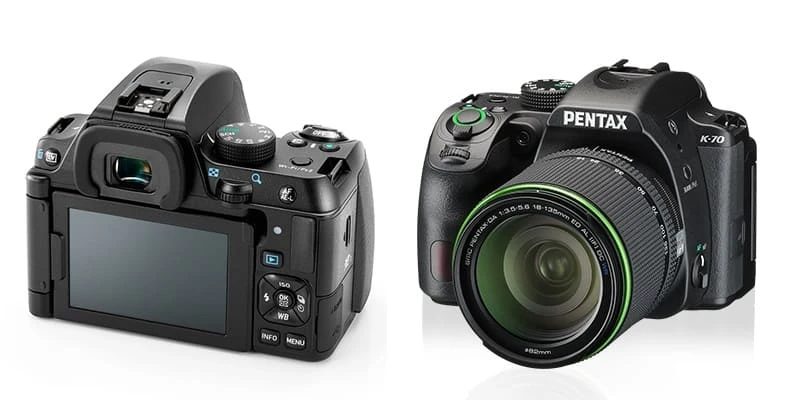
Image Credits: Ricoh-Imaging
The best DSLR camera for shake-free images.
Specifications
| Sensor | APS-C CMOS |
| Burst speed | 6 fps |
| Image processor | PRIME MII |
| ISO settings | Auto, 100 – 12,800 |
| Colour filter system | RGBG |
| Type of viewfinder | Pentaprism |
| Magnification of viewfinder | 0.95x |
| Video file format | MPEG-4 AVC/H.264, Motion JPEG for interval movie record |
| Memory type | SD, SDHC, SDXC |
| Operating temperature | N/A |
| Working humidity | N/A |
| Connectivity | WiFi, Bluetooth |
| Price | $546.95 |
With its sleek design, the Pentax K-70 is known for its multimedia capabilities and the shake reduction feature. It is specially designed for low-light photography. In addition to that, it includes a pixel shift resolution feature to further enhance the resolution and sharpness of the image or the video.
Moreover, the in-built Wi-Fi allows you to connect it with your smartphone. Also, it facilitates easy wireless transfer plus excellent night vision settings. On an added note, K-70 can stand up to rough weather conditions due to its dustproof and weather-resistant features. Night vision red light LCD monitor, 6 Frames per second continuous shooting, and 24 Megapixel APS-C AA Filter-less CMOS Sensor add another feather to this one of the best DSLR Cameras.
Pros & Cons
| Pros | Cons |
| Good night-vision settings | Poor battery life |
| Shake-free images | |
| Robust build | |
| Excellent still image quality | |
| Customize dial control |
NIKON D5600
Buy Now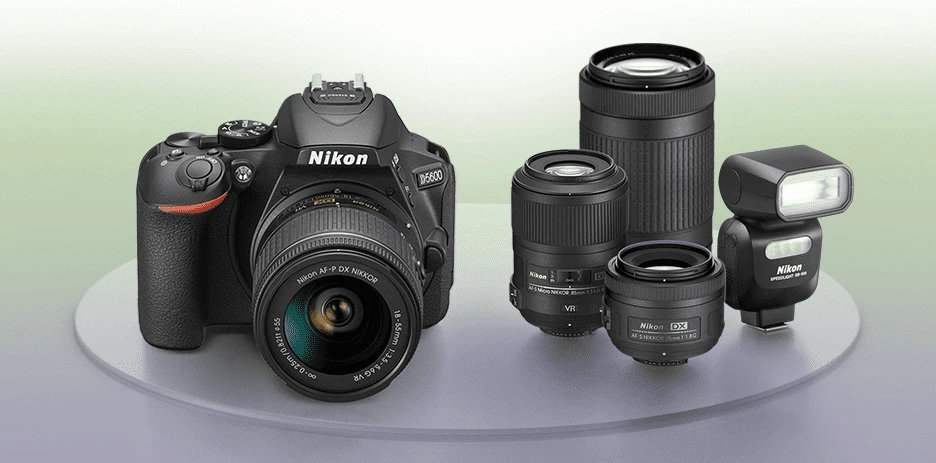
Image Credits: Nikon
The best DSLR camera for photography enthusiasts.
Specifications
| Sensor | APS-C CMOS; DX format |
| Burst speed | 5 fps |
| Image processor | EXPEED 4 |
| ISO settings | 100 – 25600 |
| Colour filter system | RGBG |
| Type of viewfinder | Pentamirror |
| Magnification of viewfinder | 0.82x |
| Video file format | H.264/MPEG-4 AVC, Stereo Linear PCM audio |
| Memory type | SD, SDHC, SDXC |
| Operating temperature | N/A |
| Working humidity | N/A |
| Connectivity | WiFi, NFC, Bluetooth |
| Price | $759 |
For anyone who is just starting as a professional photographer, Nikon D5600 is the best DSLR to buy. It comes equipped with an excellent APS-C CMOS sensor with a 24.2MP resolution to capture out-of-the-box photos. Also, it comes powered with EXPEED4 image processor that lets you capture photos in low visibility.
Moreover, free cloud storage, hi-res touch display, multiple autofocus points, and 5 fps shutter speed make D5600 a worthy investment. Aside from that, it lets you record full HD footage with crystal clear stereo sound.
In addition, the D5600 is compatible with most NIKKOR lenses, from close-up macro lenses to powerful telephoto zoom lenses. Also, you can take control of the lighting with Speedlight flashes, using either a camera or remote.
Pros & Cons
| Pros | Cons |
| Slow-motion of 2x | No 4k |
| Good battery life | No built-in autofocus |
| Detailed images | |
| Tilting touchscreen | |
| Splendid HD video recording |
CANON EOS 90D
Buy Now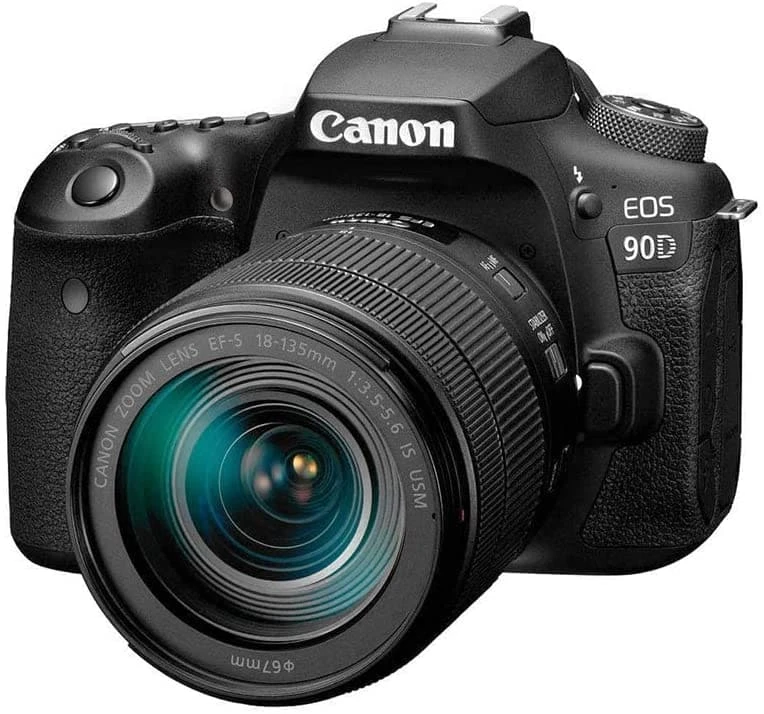
Image Credits: Amazon
The all-rounder of DSLR cameras enthusiasts.
Specifications
| Sensor | APS-C CMOS |
| Burst speed | 10 fps |
| Image processor | DIGIC 8 |
| ISO settings | 100 – 25600 |
| Colour filter system | RGB |
| Type of viewfinder | Fixed pentaprism |
| Magnification of viewfinder | 0.95x |
| Video file format | MPEG-4 AVC/H.264, AAC audio (Advanced Audio Coding) |
| Memory type | SD, SDHC, SDXC |
| Operating temperature | 32-104°F |
| Working humidity | 85% or less |
| Connectivity | WiFi, Bluetooth, |
| Price | $1,189 |
Canon EOS 90D can efficiently achieve the professional-level staggering image and video quality. Also, this DSLR camera has an impeccable design with the settings displayed on top, making it visible while shooting. It comprises dual pixel autofocus with spectacular eye and object tracking.
Moreover, the 4k mode recording feature and plenty of battery life (4-6 hours after a single charge) contributes to consider it as one of the best DSLR Cameras for vlogging. In addition, it comes equipped with an enhanced 32.5 Megapixel CMOS (APS-C) sensor and a powerful DIGIC 8 image processor that enables you to snap sharp, detailed images, even in low-light settings.
Additionally, 45 autofocus points and high-speed continuous shooting of up to 10 fps make it a perfect choice for capturing sports events and wildlife photography. And finally, an uncropped 4K 30p video capability lets you document your memories in full angle view.
Pros & Cons
| Pros | Cons |
| Dual pixel Autofocus | No log profile |
| 11 fps shooting | |
| Uncropped video in 4k | |
| In camera editing | |
| Splendid color reproduction |
PENTAX K-1 MARK II
Buy Now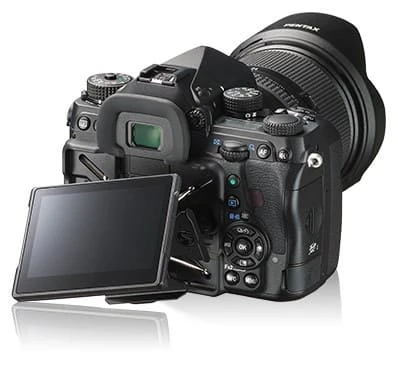
Image Credits: Ricoh Imaging
Pick this up if you are going on an adventure into the wild.
Specifications
| Sensor | CMOS |
| Burst speed | 6.4 fps; APS-C mode |
| Image processor | PRIME IV |
| ISO settings | 100-25,600 |
| Color filter system | sRBG, AdobeRBG |
| Type of viewfinder | Pentaprism |
| Magnification of viewfinder | 0.70x approx. |
| Video file format | MPEG-4 AVC/H.264 |
| Memory type | SD, SDHC, SDXC |
| Operating temperature | 14 – 104℉ |
| Working humidity | 85% or less |
| Connectivity | GPS, WLAN |
| Price | $1,796.95 |
Pentax K-1 Mark II has a unique five-axis in-body shake reduction feature making it easy into the considered into the best DSLR cameras to shoot most stable videos for capturing an in-motion object. Also, the pixel shift resolution of this model enhances the sharpness and color detail of an image.
In addition, a cross-tilt rear LCD screen with 100 % frame coverage makes way for easy positioning in various angles.
Additional features like microphones and headphones jack with high-quality audio resolution and a weather-resistant body add an element of fun to Mark II.
And lastly, you can maximize your shooting experience using its reduced noise and faster-focusing feature.
Pros & Cons
| Pros | Cons |
| 5 axis stabilization | Low battery life |
| Sturdy build | Poor live view Autofocus |
| Ample battery life | |
| 100% coverage viewfinder | |
| LCD screens has good clarity |
PENTAX K-1 MARK II
Buy Now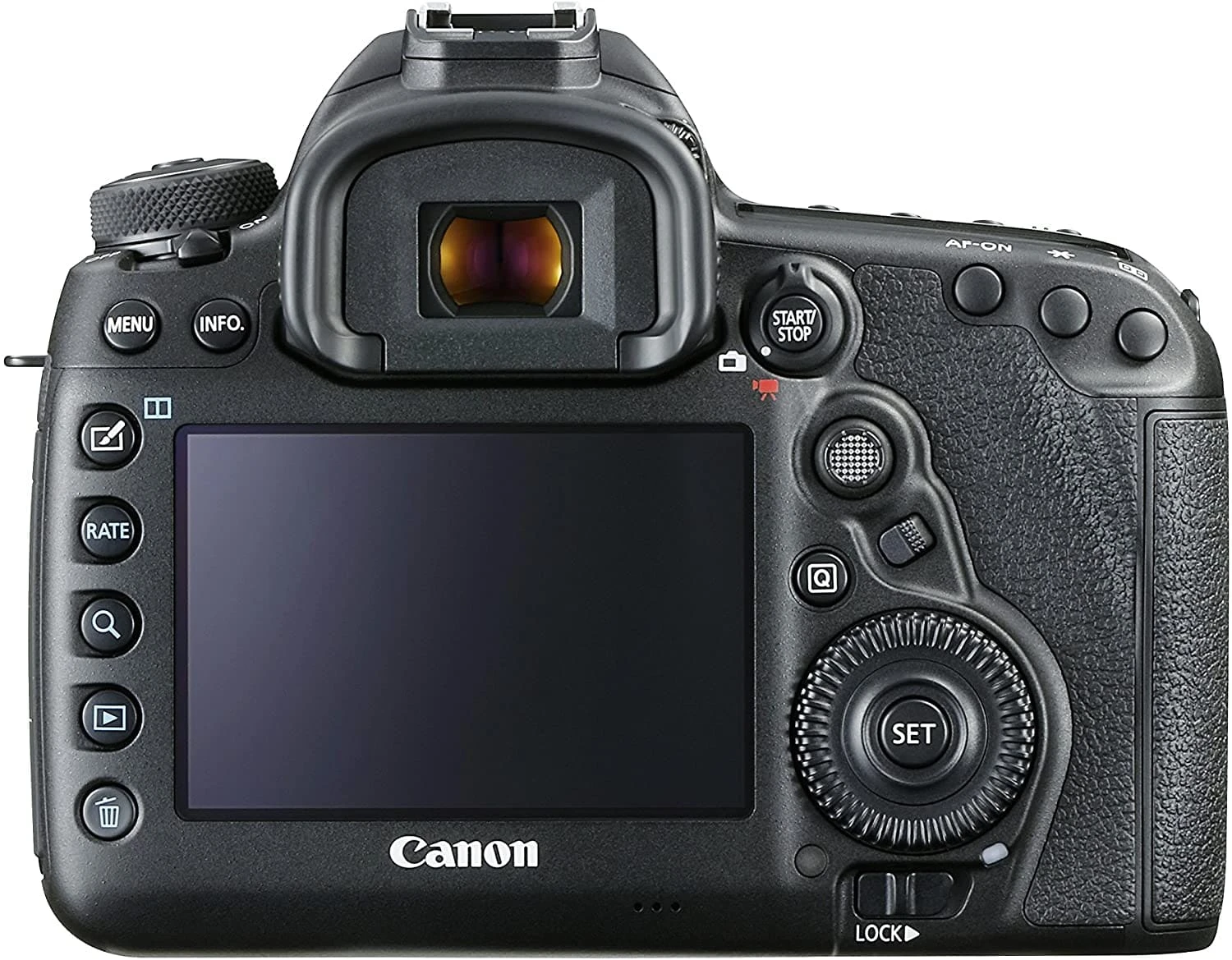
Image Credits: Amazon
Pick this up if you are going on an adventure into the wild.
Specifications
| Sensor | CMOS |
| Burst speed | 7 fps |
| Image processor | DIGIC 6+ |
| ISO settings | 100-32,000 |
| Colour filter system | RGB |
| Type of viewfinder | Fixed Pentaprism |
| Magnification of viewfinder | 0.71 approx. |
| Video file format | MPEG-4 AVC/ H.264, Linear PCM & AAC audio |
| Memory type | SD, SDHC, SDXC |
| Operating temperature | 32-104°F |
| Working humidity | 85% or less |
| Connectivity | WiFi, Bluetooth |
| Price | $2,699 |
Canon 5D Mark IV is considered as an all-around best DSLR cameras that holds the ability to excel in almost every situation thanks to its extended ISO range of 100–32000 (expandable to 50–102400). Also, it can produce hi-res 4K video and image files and capture 4K video clips that be compatible with diverse workflows like weddings, movies, wildlife, and news.
Moreover, a 30.4 MP full-frame sensor enables Mark IV to capture beautiful images and stills. Apart from it, dual pixel CMOS autofocus and Touch autofocus let you shoot quick and smooth live recording. A high-speed shutter speed of 7 fps enables you to take instant photos at full resolution.
On an added note, it includes an anti-flicker feature that results in a perfect picture despite flickering electric lights. And lastly, Mark IV is equipped with a mirror vibration control system and in-built Wi-Fi/NFC feature as well.
Pros & Cons
| Pros | Cons |
| Anti-flicker | Pricey |
| Pro-level images | Terrible in 4k |
| Excellent burst speed | |
| Splendid color accuracy | |
| Fast autofocus |
NIKON D850
Buy Now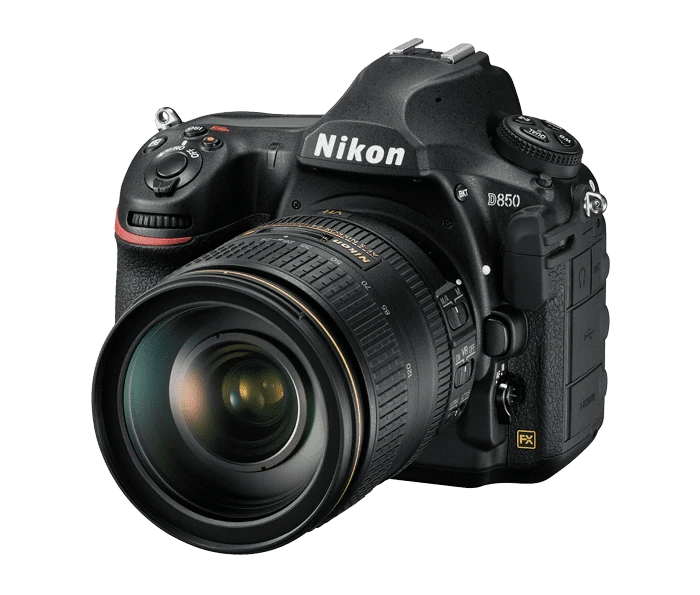
Image Credits: Nikon
A perfect choice for videography.
Specifications
| Sensor | CMOS BSI |
| Burst speed | 7 fps |
| Image processor | EXPEED 5 |
| ISO settings | Auto, 64-25,600 |
| Colour filter system | RGB |
| Type of viewfinder | Pentaprism |
| Magnification of viewfinder | 0.75x |
| Video file format | MPEG-4 AVC/H.264, Linear PCM and AAC audio |
| Memory type | SD, SDHC, SDXC, XQD |
| Operating temperature | 32 – 104°F |
| Working humidity | 85% or less |
| Connectivity | Bluetooth, WiFi, GPS |
| Price | $2,996 |
A 45 MP full-screen sensor and 4k resolution with 120 fps in flat profile, makes Nikon D850 the best DSLR camera for videography on a professional level. Also, it captures 51 raw photos in a single shot.
Moreover, it consists of 153 autofocus points, which is not as good as Canon’s dual pixel autofocus system, but still, it is the top choice for professional videographers. In addition, it can capture ultra-fast action in 45.7 megapixels with brilliant resolution.
Again, EXPEED 5 processor brings exciting features to the table. These features include lower noise, wider dynamic range, subtle tonal and textural details, high-speed continuous shooting at approx 9 fps, and full-frame 4K UHD movie recording
Pros & Cons
| Pros | Cons |
| Best resolution | High ISO but prominent grains |
| 4k video; zero crop | Muted cool colors |
| Easy setup | |
| Ample autofocus speed | |
| Sturdy body |
CANON EOS REBEL SL3/ 250D
Buy Now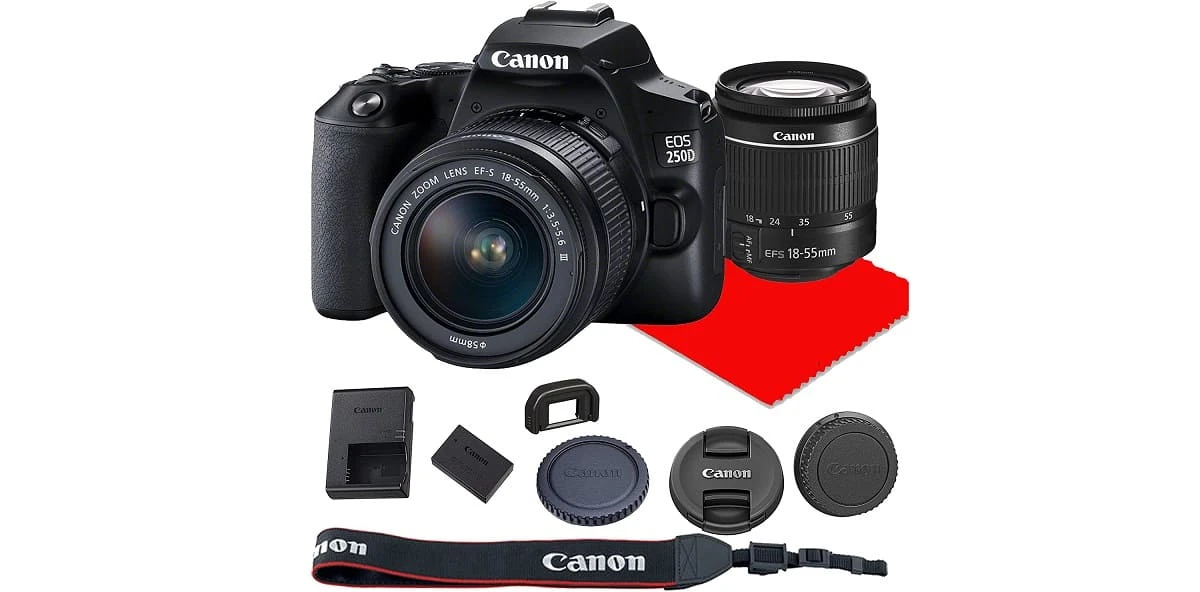
Image Credits: Amazon
The DSLR of choice for cost-effective but first-rate videography skills.
Specifications
| Sensor | CMOS |
| Burst speed | 5 fps |
| Image processor | DIGIC 8 |
| ISO settings | Auto, 100-1600 |
| Colour filter system | RGB |
| Type of viewfinder | Fixed Pentamirror |
| Magnification of viewfinder | 0.8x |
| Video file format | MPEG-4 AVC/H.264, AAC audio |
| Memory type | SD, SDHC, SDXC |
| Operating temperature | 32 -104°F |
| Working humidity | 85% or less |
| Connectivity | WiFi, Bluetooth, GPS |
| Price | $759 |
Canon EOS Rebel SL3/250D is included in the best DSLR cameras for aspiring photo enthusiasts. It is the lightest and most compact EOS DSLR camera.
Also, 4K recording capability, Dual Pixel CMOS AF, and a vari-angle LCD for selfies add versatility to this EOS model. Besides, it has an in-built guide option which makes it easy to use for amateurs.
Similarly, it works marvelously in live view mode like a mirrorless camera.
Moreover, a potent concoction of DIGIC 8 Processor and CMOS Sensor culminates in an incredible performance. With 4K Time-lapse movies and a Creative Assist mechanism, you can expand the horizon of your creativity.
Furthermore, Vari-angle touch screen, in-built WiFi, and Bluetooth with Auto Image Transfer feature add value to your photography experience.
Pros & Cons
| Pros | Cons |
| Built-in guide mode | Too small in size |
| 4k mode | |
| Great range of lenses | |
| Good image quality |
Pentax K-3 Mark III
Buy Now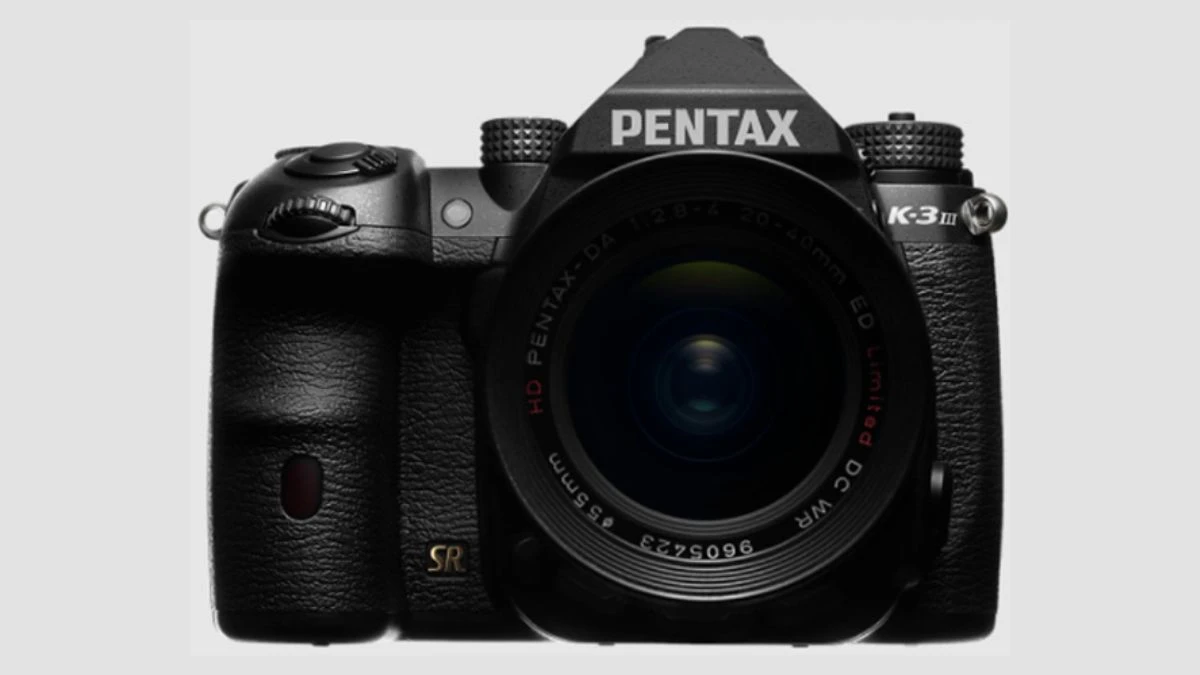
Image Credits: ricoh-imaging
High-ISO performance for low-light
Specifications
| Sensor | CMOS |
| Burst speed | 5 fps |
| Image processor | DIGIC 8 |
| ISO settings | Auto, 100-1600 |
| Colour filter system | RGB |
| Type of viewfinder | Fixed Pentamirror |
| Magnification of viewfinder | 0.8x |
| Video file format | MPEG-4 AVC/H.264, AAC audio |
| Memory type | SD, SDHC, SDXC |
| Operating temperature | 32 -104°F |
| Working humidity | 85% or less |
| Connectivity | WiFi, Bluetooth, GPS |
| Price | $759 |
Launched in 2020, Nikon upgraded the features of its last model Nikon D750 with an evolved live view autofocus, touchscreen display, 4k ultra-high definition resolution video recording, and a burst speed that reaches 12 fps in live view mode.
Also, it wears an ergonomic design making it easy to carry. Nikon D780, to put it simply, is a hybrid of mirrorless and DSLR cameras. That itself makes it the top choice for photo enthusiasts worldwide.
Moreover, with a powerful combination of 24.5 effective megapixels and the EXPEED 6 image-processing engine, you can harness the power of speed and accuracy with two autofocus (AF) systems that allow for a smooth photography experience.
Furthermore, low illumination AF detection enables you to capture views in low light. It employs an electronic shutter that can shoot up to 12-fps (with AE/AF). It allows silent shooting without a shutter-release sound – perfect for sound-sensitive events. With an extensive F mount lens line-up, you experience a great range of optics to suit any shooting ambiance.
Pros & Cons
| Pros | Cons |
| Built-in guide mode | Too small in size |
| 4k mode | |
| Great range of lenses | |
| Good image quality |
Essential tips for maintaining your DSLR
Cover the lens with the plastic cover that comes with the camera to avoid scratches and dirt.
DSLR – A brief history
The 2009 Nobel Prize for Physics winners Willard S. Boyle and George E. Smith invented an imaging technology through a digital sensor, CCD or Charge-Coupled Device, in 1969. In 1986, Nikon SVC, the first DSLR prototype, was unveiled by Nikon.
In 1987, Kodak developed a DSLR camera exclusively used by the U.S. government only. In the late 1980s, QV-1000C, the first commercial DSLR, was released by Nikon, which set the precedence for all the future models of DSLR cameras.
Over the decade, manufacturers added many new features in the previous models to upgrade the functions, performance, and image quality.
In 2008, the first DSLR with a video recording feature was released by Nikon. And in 2012, Canon released the first DSLR with touchscreen functionality.
Many other major companies now offer all these features in their models.
Although the market has shifted majorly to mirrorless interchangeable-lens cameras (MILC), DSLRs still rule among professional still photographers and photo enthusiasts.
Why buy a DSLR?
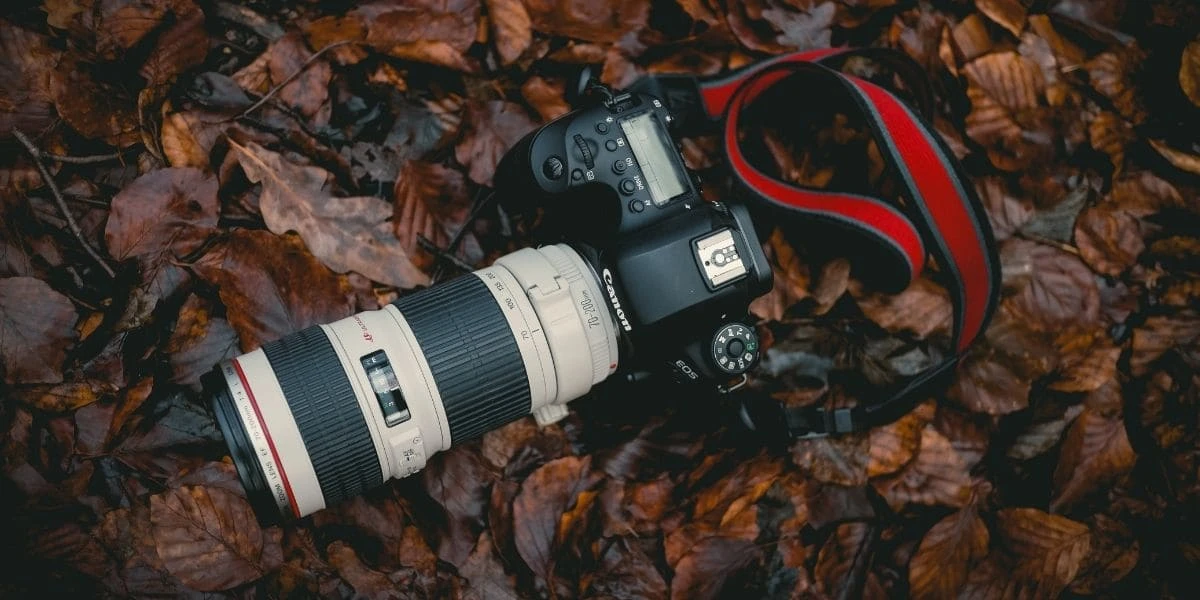
Many of the best DSLR cameras produce much more defined images as compared to other digital cameras. Also, they have plenty of megapixels with ergonomic designs, making them easy to handle. Also, they are compatible with a variety of lenses and have excellent battery life with Wi-Fi connectivity. Some models even have an NFC feature, making the image transfer easy.
Another advantage of using a DSLR is the shutter and focus speeds. So you can bet on never missing that quick first smile of a baby with a DSLR on hand. And to compete in the ever-expanding market of mirrorless cameras, some models even come with features similar to them, with a reduced price tag.
Equipped with high-quality optical viewfinders, comfortable grips, and often 4k mode, a DSLR camera would be the best investment you make. It even has a weather sealing body with solid construction.
With all these benefits, why wouldn’t one get a DSLR camera?
Features – Almost all wireless earbuds have features that make them stand out from the rest. It is best to stick to the features that are relevant to you. If you are a sports enthusiast, you should look for earbuds that are sweat-proof or water-resistant. Some key features include the playback music control, making calls, stable connectivity, and quick pairing.
Sound quality – There is no point in purchasing a pair of earbuds if it does not offer good sound quality. You should make sure that the earbuds have a rich, balanced sound. The bass should neither be too low nor too loud. Moreover, it would help if you are looking for earbuds with decent mic-reception quality. It is crucial to get a pair that has good ANC and allows good call quality.
How to choose the best DSLR cameras?
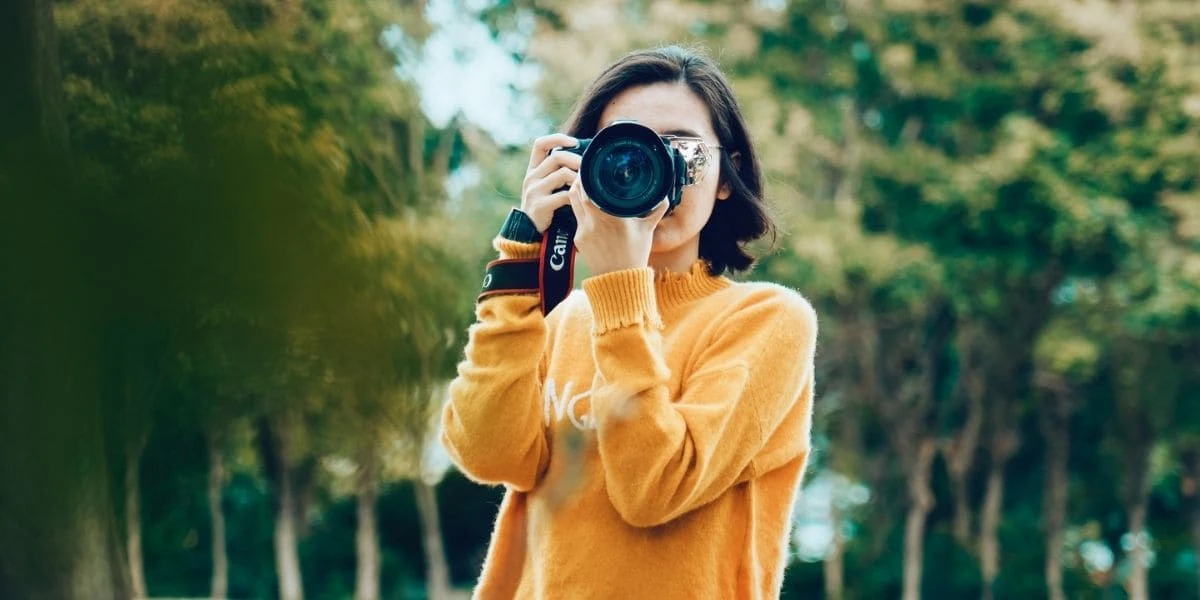
Check for affordability – It will be a massive investment on your part. So be sure about your requirements, go through the features and specifications mentioned above and then decide which one you want to buy. Keep your preferences in mind while buying as a model not matching your needs might lead to unnecessary expenditure.
Check the model – Before purchasing, make sure the model is not old because old models have old processors, which might malfunction in the long run. Try to buy the recent models if the latest ones are not in your budget.
ISO power and low light performance – Even phone cameras offer staggering image quality if the lighting is perfect. Therefore, check the ISO power, resolution, clarity, sharpness, and night mode performance of the model before purchasing.
Lens compatibility – DSLRs can be used with all kinds of lenses. But check the number of lenses available with the model you are buying. Also, make sure they are compatible and in your price range.
FAQs:
SLR and DSLR have the same working mechanism. The difference is that an SLR captures an image on film, whereas a DSLR captures it digitally. So it is a choice between having images on a film or a digital file.
